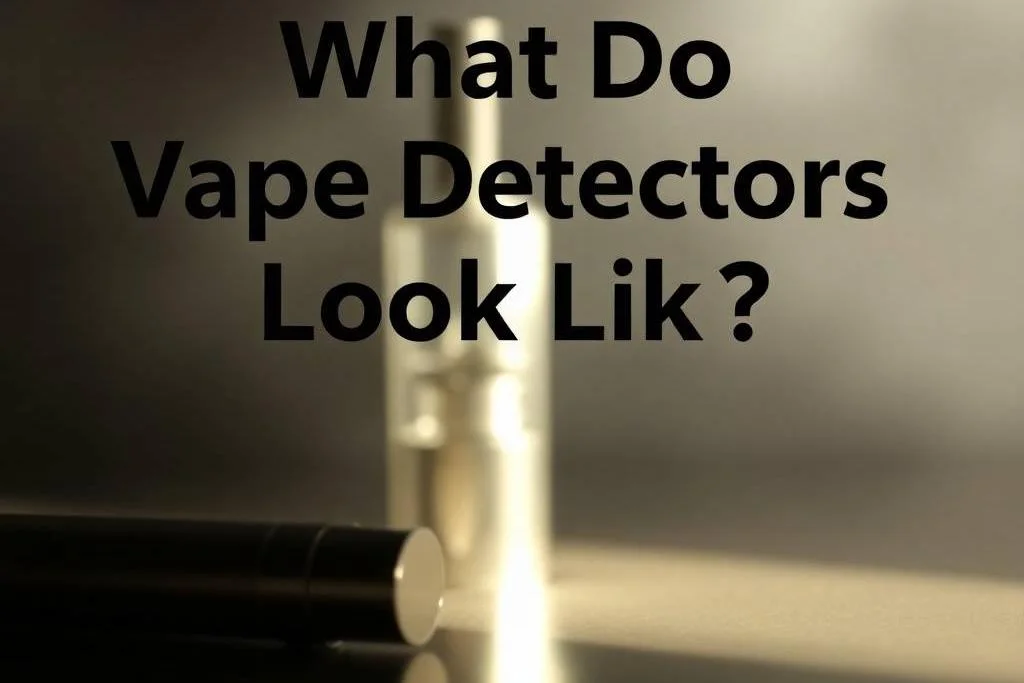What Do Vape Detectors Look Like?
4/27/2025, 9:07:30 AM 58
As vaping continues to rise in popularity, schools, businesses, and public facilities are stepping up efforts to prevent its use indoors. One of the key tools in this effort is the vape detector. But what exactly do these devices look like? If you've ever wondered what do vape detectors look like, this guide will walk you through their appearance, features, and where you’re most likely to find them.
Understanding Vape Detectors
Vape detectors are specialized sensors designed to detect the chemicals and particles released from e-cigarettes and vaporizers. Unlike smoke detectors, which react mainly to fire-related smoke, vape detectors can sense vapor from nicotine, THC, and other e-liquid products, even when the vapor is almost invisible.
What Do Vape Detectors Look Like?
Most vape detectors are designed to be discreet, blending seamlessly into the environment. Here’s what you can expect:
1. Compact and Minimalist Design
Vape detectors are usually small and rectangular or circular, about the size of a smoke detector or a Wi-Fi router. They are often white, gray, or black, allowing them to match standard ceiling or wall colors. Their unobtrusive design helps them go unnoticed by casual observers.
2. Mounted on Ceilings or High Walls
Like traditional smoke detectors, vape detectors are typically installed on ceilings or high on walls. This placement allows them to monitor the air effectively, as vapor tends to rise.
3. LED Indicators
Many vape detectors feature small LED lights. These lights may blink or change color when the device is active, in testing mode, or has detected vapor. Some models include status indicators that alert staff if maintenance is required.
4. Vents and Sensor Grilles
On closer inspection, you might notice tiny vents or grilles on the surface. These allow the sensors inside to sample the surrounding air continuously for traces of vapor or aerosolized chemicals.
5. Modern Smart Designs
In high-tech settings like private schools, universities, and corporate offices, vape detectors often resemble modern smart devices. Some even have touchscreen panels or Wi-Fi antennas to connect with monitoring systems, sending real-time alerts to security or administrative staff.
6. Branding and Model Information
While many units are discreet, you may spot a small brand logo or model number, especially on industrial-grade detectors. Brands like FlySense, Halo Smart Sensor, and Triton Sensors are some of the leaders in the market.
Where Are Vape Detectors Commonly Installed?
You’ll often find vape detectors in places where vaping is prohibited, such as:
- Schools and Universities: Particularly in bathrooms, locker rooms, and hallways.
- Office Buildings: To enforce workplace no-smoking policies.
- Hospitals and Clinics: To protect air quality and patient health.
- Public Transportation Hubs: In areas like restrooms, waiting lounges, and terminals.
- Hotels and Resorts: To prevent guests from vaping in non-smoking rooms.
How Effective Are Vape Detectors?
Modern vape detectors are highly sensitive. They can detect tiny amounts of vapor and trigger immediate alerts via text, email, or direct alarms. Some models can even detect sound anomalies (like shouting or loud disturbances) to improve overall safety monitoring.
However, they are not foolproof. Thick ventilation systems, open windows, or strong airflow can sometimes reduce their effectiveness. That’s why placement and regular calibration are critical for optimal performance.
Conclusion
If you've ever found yourself wondering what do vape detectors look like, now you know: they are small, discreet, and designed to quietly but effectively monitor the air for vapor particles. As vaping regulations tighten and public spaces work harder to enforce their policies, you can expect to see more of these unobtrusive devices around.
Whether you’re a student trying to spot one at school or a facility manager considering installation, understanding the appearance and function of vape detectors can help you stay informed—and prepared.














